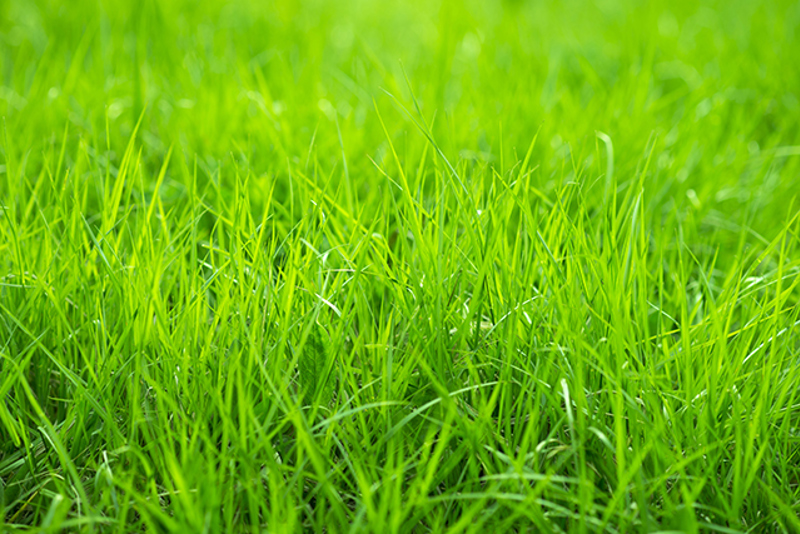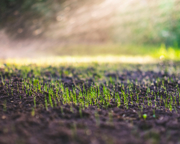Yates Account
Join now
Create a Yates account today!
Sign up to join the Yates Garden Club for monthly e-mails packed with seasonal inspiration, tips for success & exclusive promotions.
Plus if you’re a Garden Club member you can take part in the Yates Growing Community - a blog to share successes, get advice & win prizes in fun challenges along the way!

Forgot password
Enter the email address associated with your account, and we'll email you a new password.

A Good Autumn Feed
Autumn is an important time to feed established lawns. This helps get them into top condition before the cold weather arrives; a well-fed lawn will also be greener, thicker and healthier. Yates Dynamic Lifter Organic Lawn Food, which combines composted chicken manure , blood & bone, fish and seaweed is ideal to enrich the structure of the soil. It does this by adding organic content that encourages earthworms and beneficial soil micro-organisms, that in turn help to improve the soils porosity (drainage) and air movement. This all makes it easier for your lawn to grow and root deeper into the soil. Having happy microbes is the secret to a good lawn, because the microbes break down fertiliser into a form that lawn grass can absorb.
If your lawn's weed free and you only need to feed, Yates Lawn Fertiliser Quarterly Hose-on is an excellent option for autumn. It feeds for 3 months, but also contains seaweed and humates that help your lawn and its microbial community bounce back after a tough summer season.
The development of high-performing slow release lawn foods has made it easier to navigate the lawn's transition to winter. Your lawn grass and microbial soil community underneath it are in sync with the seasons - if the grass becomes dormant, the microbes are also snoozing. Because the nitrogen in slow-release fertilisers is 'unlocked' for grass by microbial action, this means the nutrition is only supplied at the rate grass can use it - as soil temperature falls and everything begins to slow down, grass nutrition also slows.
Slow release fertilisers perform well in autumn because they supply nutrients in time with the grass as it becomes drowsy; in comparison, a big surge of nitrogen in cold conditions won't be completely absorbed - the excess can remain in the soil and will eventually leach into groundwater. Slow release Yates Lawn Fertiliser Quarterly is a premium granular option that gently feeds for 12 weeks after application, so it's an excellent choice for autumn.

Watch out for Lawn Diseases and Pests!
Mild temperatures, autumn rainfall and high humidity create ideal conditions for lawn diseases. These seasonal diseases include brown patch, fusarium, dollar spot and anthracnose. Lawn diseases can be tricky to diagnose, as symptoms can look similar to completely different lawn problems, such as damage from porina caterpillars or grass grub. You can check here for pictures of disease symptoms, to help you ID the problem.
Autumn is when you'll see lawn damage from grass grub in particular, so it's great idea to do a ‘spade test’ to confirm you have a grub infestation. Choose a spot in the affected area, then use a spade to cut a square hole in your lawn soil, a spade-width on each side, and a spade deep. Lever out the ‘cube’ of soil and dump it into a wheelbarrow. Crumble the soil, searching through it for white grubs. If you find grubs, it's time to apply Yates Lawn Grub & Porina Kill + Protect to solve the problem.
The next generation of grass grubs hatched back in summer, and have been grazing on your grass roots since then. Larvae are getting large enough during autumn for their damage to become more noticeable. When winter arrives, they'll be reaching their largest size. Bigger grubs naturally eat more grass, so they can cause severe damage to lawns, gardens and potted plants during the cold season.
Common lawn disease symptoms include areas of small discoloured, browned off or dead patches in the lawn. Brown patch or anthracnose patches tend to be irregular shaped, while dollar spot and fusarium form small circular patches. Lawn diseases can spread and reoccur year after year, so it’s important to get them under control and keep your lawn looking fantastic.
Here’s how to help reduce the risk of lawn diseases:
-
Mow regularly to prevent a build-up of thatch, because it will absorb moisture and stay wet.
-
Remove grass clippings from the lawn.
-
Water only in the mornings, to allow the lawn to dry off during the day.
-
Aerate or core your lawn, to improve drainage.
-
To control lawn dollar spot and rust diseases, use a fungicide like Yates Fungus Fighter Fungicide, an effective broad spectrum systemic fungicide with both curative and protective action. Yates Fungus Fighter can be easily applied over affected lawn areas in a watering can.
-
Apply a potassium-rich plant food like Yates Thrive Natural Sulfate of Potash in early April. Potassium is a nutrient that helps strengthen the lawn so it’s better able to resist disease infection, plus cope with the cool winter weather. Apply it at 50 g/m2 and then water in well.
Whacking Weeds
Broadleaf weeds like Capeweed, Dandelion, Catsear and Plantain (Lamb's Tongue) are a different shape and colour to grass, so they really stand out and ruin the look of a lawn. Luckily, it doesn't need to be complicated or time consuming to create a weed-free lawn, you can easily control them with a selective herbicide. This is the type of weedkiller that removes weedy invaders without harming the lawn grass. Yates Turfix Lawn Weed Spray is our go-to choice to cull these weeds, and it's compatible with common NZ lawn types like Fescue, Browntop, and Ryegrass.
Alternatively, if you'd prefer to take care of weeds and feed at the same time, choose Yates Weed ‘n’ Feed. It has added surfactant to aid spray coverage and weed penetration, plus it contains nutrients to give the lawn a quick green up. It's available in a convenient hose-on pack, or as a dry granular formulation. Job done!
If you had prickles in your lawn this summer, make sure you get Onehunga Weed under control before it has a chance to flower and set seed in spring...basically, you need to kill it before it flowers to stop the prickles from forming. An application of our Yates Prickle Weedkiller any time before late spring will prevent prickles for next summer - you can begin in autumn, or hold off until early spring when the soil begins to warm up.
There are a few tricky and invasive lawn weeds that you'll need to call in the big guns for - native hydrocotyle and creeping oxalis are examples. To get on top of persistent weeds, choose Yates Hydrocotyle Killer for the job.
During April, you can also fill in sparse patches in your lawn by sprinkling Yates Seed'n'Feed amongst the existing grass.

















Share
Share this article on social media